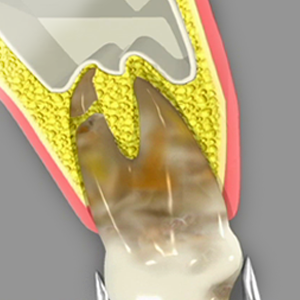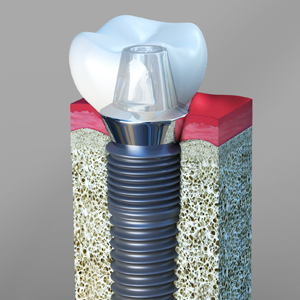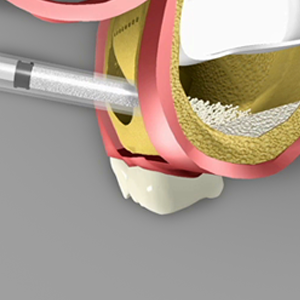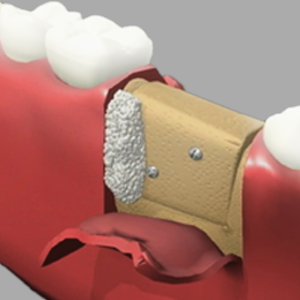
Tooth extraction may be necessary in order to prevent dental infection from spreading to gums and other teeth. The process is done with the help of local anesthesia. It may be a simple procedure where elevators and forceps are used to pull out the tooth. In some cases a surgery may be necessary to carefully extract the tooth which is a threat. The dentist may remove certain gum tissues and bone to be able to remove the tooth. Extraction of an impacted wisdom tooth may also involve sectioning of the tooth structure. Apart from wisdom teeth extraction there can be other complex conditions which require oral surgery. Some examples are teeth with curved roots, cracked tooth and broken tooth.

Fear of dental treatment is one of the reasons why patients avoid visiting dental practice. Although most of the treatments performed with the help of local anaesthesia relieve patients from pain, the anxiety in them is hard to combat. Sedation dentistry is a method of using special agents to ease patients during dental treatment. From moderate to deep sedation there are various levels which help dentists relieve patients from anxiety so that they can concentrate on treatment. Over-the-counter sedatives and nitrous oxide are commonly used by dentists. Other higher levels of sedation may require training, license and specialized equipment for monitoring patients. Irrespective of the type of sedation the patient should be constantly monitored during the treatment and for few hours after the treatment in order to ensure that the process is safe.

When a tooth is lost the specialized bony process that houses the tooth begins to reabsorb due to lack of stimulation. This causes a decrease in width and height of the bone in the area the tooth is lost. Neighbouring teeth and opposing teeth begin to move into the space. This causes food lodgement, subsequent decay, gum disease and abnormal forces being transmitted to teeth leading to fracture of cusps which may necessitate root canal treatment or extraction. Loss of teeth can also cause the cheek and lips to collapse giving an aged look.
The consequences of tooth loss can be prevented by replacing the lost tooth in a timely manner. Although there are several options to replace a missing tooth the number one choice for replacing lost teeth are dental implants. Implants are tiny titanium screws or posts that are surgically placed in the bone. Once integrated into bone they act like roots onto which small posts are attached which protrude through the gums. These posts provide stable anchors to the replacement teeth. Implants maintain the bone height by stimulation and prevents unnecessary trimming of adjoining teeth for bridge placement. Since implants are titanium posts there is no chance for decay on implants. Implants can service you for several years with regular professional cleaning and proper home care.
Many people who are missing a single tooth opt for a fixed bridge; but a bridge may require the cutting down of healthy, adjacent teeth that may or may not need to be restored in the future. Then there is the additional cost of possibly having to replace the bridge once, twice or more over the course of a lifetime due to decay or gum problems affecting the anchor teeth.
Another option to replace missing teeth is a removable partial denture or complete denture depending on the number of teeth missing. The chewing efficiency with a denture is reduced to more than half of that of natural teeth. The teeth that support the partial denture are weakened due to the excessive loads acting on them and eventually are lost. The denture rests on the gum causing tissue abrasion and bone loss. Removable dentures may slip or cause embarrassing clicking sounds while eating or speaking.
Studies show that within five to seven years there is a failure rate of up to 30% in teeth located next to a fixed bridge or removable partial denture.
Who is a candidate for Implants?Anyone who is missing one or several teeth is a candidate for implants. With the exception of growing children, dental implants are the solution of choice for people of all ages, even those with the following health concerns:
Existing Medical Conditions: If you can have routine dental treatment, you can generally have an implant placed. While precautions are advisable for certain conditions, patients with such chronic diseases as high blood pressure and diabetes are usually successful candidates for dental implant treatment.
Gum Disease or Problem Teeth: Almost all implants placed in patients who have lost their teeth to periodontal disease or decay has been successful.
Currently Wearing Partials or Dentures: Implants can replace removable bridges or dentures, or they can be used to stabilize and secure the denture, making it much more comfortable.
Smokers: Although smoking lowers the success rate of implants, it doesn't eliminate the possibility of getting them.
Bone Loss: Bone loss is not uncommon for people who have lost teeth or had periodontal disease. Oral and maxillofacial surgeons are trained and experienced in grafting bone to safely and permanently secure the implant.
Implant tooth replacement in children is usually deferred until their jaw growth is complete. There are, however, some instances when a dental implant may be appropriate, such as when it is part of the child's orthodontic treatment plan. Your family dentist or orthodontist can guide you in this instance.
ProcedureDental Implant placement usually takes two surgical appointments:

Sinus graft is a surgery performed to add bone to help replace a missing back tooth in the upper jaw. Tooth loss may lead to shrinkage of jaw bone in the maxillary sinus floor. A dental implant surgery requires enough bone volume to hold the implant. Sinus graft is a complex surgery where a lateral opening is made and the soft skin of the maxillary sinus is separated from the bone in order to build the bone using substitute material. The process requires exceptional skills from the dentist.

Extraction of a tooth causes resorption of the supporting bone. Bone resorption causes a 40-60% decrease in its width during the first three years following extraction. Bone resorption occurs at the expense of the outer plate of bone reducing the width of bone. Then overtime the height of bone is reduced. This becomes critical for anterior implants where ideal aesthetics, phonetics and function is desired. In the upper jaw following extraction the sinus floor begins to expand further decreasing the available bone to place implants in the posterior maxilla. In the lower jaw the mandibular nerve runs in the bone limiting the length of the implant placed.
Bone Grafting can be used as a socket preservation procedure when it is placed following extraction of a tooth or to augment an atrophied or reabsorbed site.
Bone Grafting Procedures Ridge-augmentationIn severe cases of ridge resorption bone graft is placed to increase the ridge height and or width.
Sinus Lift and Graft ProcedureThis procedure involves elevating the sinus membrane and placing the bone graft onto the sinus floor, allowing implants to be placed in the back part of the upper jaw.
Nerve - repositioningThe mandibular nerve may need to be moved in order to make room for placement of dental implants in the lower jaw.
These procedures may be performed separately or together, depending upon the individual's condition. There are several areas of the body which are suitable for attaining bone grafts. In the maxillofacial region, bone grafts can be taken from inside the mouth, in the area of the chin or third molar region or in the upper jaw behind the last tooth. In more extensive situations, a greater quantity of bone can be attained from the hip or the outer aspect of the tibia at the knee.
Several bone augmentation materials are available to stimulate and encourage bone growth in areas where it is lost as a result of pathological or physiological processes.
Bone grafting materials can be derived from various sources
Bone Grafting will help to place larger diameter implants in ideal locations that are stable and serviceable for a long time. It also helps to establish normal volume and dimensions of bone for ideal aesthetics, lip support and phonetics.